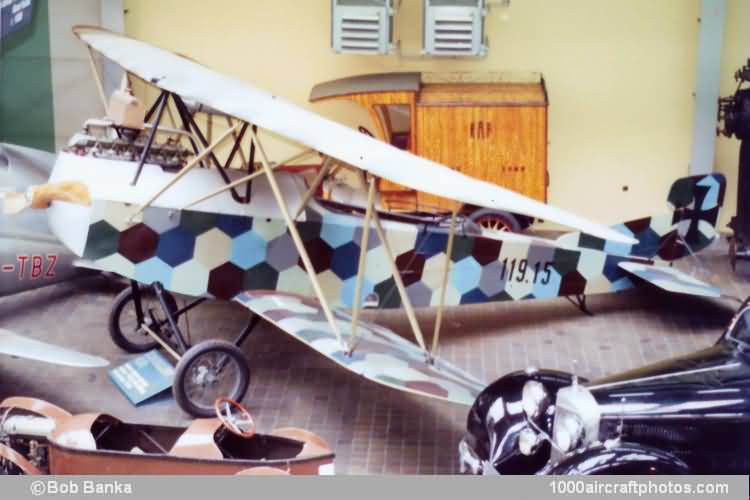06/30/2010. Remarks by Johan Visschedijk: "Professor Richard Knoller, lecturer at the k.u.k. Technischen Hochschule (kaiserliche und königliche, imperial and royal Technical University) in Vienna, Austria, designed this reconnaissance aircraft for use by the Austro-Hungarian k.u.k. Luftfahrttruppen (kukLFT, imperial and royal aviation troops).
The conventional biplane had staggered fabric covered wooden wings of unequal span, while the upper one was swept back; the warren truss configured interplane struts were made of steel. The pilot and observer were seated in an open cockpit in a wooden fuselage covered with plywood, and sheet metal top fairings from cockpit to nose. The aircraft was powered by an 185 hp Austro-Daimler six-cylinder liquid-cooled in-line engine, driving a two-blade wooden propeller. Armament consisted of two machine guns and three bombs in an internal bomb bay.
First flown in September 1916, production was undertaken by three Austrian companies, Österreich-Ungarische Flugzeugfabrik Aviatik, Wiener Karosserie und Flugzeugfabrik, and Jacob Lohner & Co., Wien-Floridsdorf, each producing 25 aircraft. On February 10, 1917, during a factory test flight the wings collapsed and the aircraft crashed, killing the crew. Production was immediately suspended and the few dozen aircraft that had been produced were regulated as ground personnel instruction airframes.
The sole example preserved at the Nerodni Tecnické Museum (National Technical Museum), is one of the few aircraft produced by the WW I Austrian aircraft industry that have survived."
